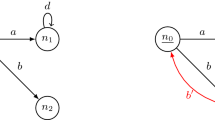Abstract
Aliasing, mutable state and stable object identities are inherent in object-oriented programming. It is a well-known fact that this troika of features cause problems for practitioners, tool developers and formalists alike. Patterns for aliasing, and patterns for structuring object graphs exist, and manipulating aliases and managing these graphs or graph-like structures are among the most frequent operations in object-oriented programming. Yet, mainstream languages provide only low-level support for these operations in reading and writing of variables. The bookkeeping, making sure graph structures are preserved, temporary aliases deleted, etc. is left to the programmer.
In this talk, I will review some of my work on managing aliases in object-oriented systems, and talk about some recent efforts to unify these approaches to provide what we could call a theory and practise of structured aliasing for object-oriented programming.
Access this chapter
Tax calculation will be finalised at checkout
Purchases are for personal use only
Similar content being viewed by others
Author information
Authors and Affiliations
Editor information
Editors and Affiliations
Rights and permissions
Copyright information
© 2012 Springer-Verlag Berlin Heidelberg
About this paper
Cite this paper
Wrigstad, T. (2012). Structured Aliasing. In: Noble, J. (eds) ECOOP 2012 – Object-Oriented Programming. ECOOP 2012. Lecture Notes in Computer Science, vol 7313. Springer, Berlin, Heidelberg. https://doi.org/10.1007/978-3-642-31057-7_11
Download citation
DOI: https://doi.org/10.1007/978-3-642-31057-7_11
Publisher Name: Springer, Berlin, Heidelberg
Print ISBN: 978-3-642-31056-0
Online ISBN: 978-3-642-31057-7
eBook Packages: Computer ScienceComputer Science (R0)




